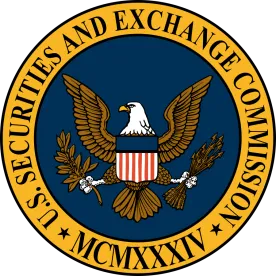In late 2019, the US Securities and Exchange Commission (the SEC) announced proposed amendments to the definition of “accredited investor” that, if adopted substantially as proposed, would expand the spectrum of potential investors able to participate in exempt private offerings relying on Regulation D, promulgated under the Securities Act of 1933, as amended (the SEC’s primary “private placement” exemption).
Regulation D was adopted by the SEC in 1982, and for companies raising private capital, provides a “road map” of the safe harbors exempting these issuers from the registration requirements of the Securities Act. Since its adoption, the “accredited investor” definition — described by the SEC in the release as the “cornerstone of Regulation D” — has undergone only three limited amendments (1988, 1989, and 2011). However, the SEC also recognizes that the issuers engaged in private offerings conducted under Regulation D (in particular, Rule 506 of Regulation D) play a substantial role in the aggregation of capital for companies in the US — accounting for an estimated $1.7 trillion raised in 2018 (compared with the $1.4 trillion raised in registered offerings).
While cognizant of the potential damage an expansive definition could have on the protections afforded to investors (for which the rules and regulations contained in the Securities Act were designed), the staff similarly recognizes that an unduly narrowed definition could hinder access by potential investors to opportunities in which they are adequately protected within the spirit of the rules.
Proposed Amendments to “Accredited Investor” Definition Under Regulation D (Rule 501(a))
The proposed amendments would expand the categories of natural persons and entities that would qualify as accredited investors, clarify certain aspects of the current definition, and clarify the interplay of accredited investors with other areas of the federal securities laws. A summary of the proposed changes to the “accredited investor” definition follows, and the full text of the proposed amendments can be found here.
Professional Certifications and Designations and Other Credentials
This categorical expansion to the “accredited investor” definition includes natural persons holding certain professional certifications, designations, and credentials from an accredited educational institution. Unlike the historical factors for natural persons, this additional category would qualify these professionals independent of their net worth, as the SEC believes these individuals have demonstrated a level of sophistication in the areas of securities and investing such that they may not need the protections from registration under the Securities Act. In making its determination regarding a particular certification, designation, or credential, the SEC stated it intends to consider the following nonexhaustive list of attributes:
-
The certification, designation, or credential arises out of an examination or series of examinations administered by a self-regulatory organization or other industry body, or is issued by an accredited educational institution.
-
The examination or series of examinations is designed to reliably and validly demonstrate an individual’s comprehension and sophistication in the areas of securities and investing.
-
Persons obtaining such certification, designation, or credential can reasonably be expected to have sufficient knowledge and experience in financial and business matters to evaluate the merits and risks of a prospective investment.
-
An indication that an individual holds the certification, designation, or credential is made publicly available by the relevant self-regulatory organization or other industry body.
In addition, the SEC expects to specifically codify the following qualifying certifications and designations in an order accompanying the final rule: (a) Series 7 licensed general securities representatives; (b) Series 65 licensed investment adviser representatives; and (c) Series 82 licensed private securities offerings representatives. However, the SEC noted that other qualifying certifications, designations, and credentials would be designated separately from time to time and posted on its website.
Knowledgeable Employees of Private Funds
This additional category of accredited investors would include natural persons who are deemed “knowledgeable employees” of private funds under Rule 3c-5(a)(4) of the Investment Company Act of 1940. Qualifying knowledgeable employees would be considered accredited investors with respect to investments in their employer’s private fund, and would include trustees, advisory board members, or persons serving in a similar capacity, among others, of a fund defined in Section 3(c)(1) or 3(c)(7) of the Investment Company Act of 1940; an affiliated person of the fund overseeing its investments; and employees of the fund or the affiliated person of the fund. However, employees performing solely clerical, secretarial, or administrative functions would not qualify.
Additional Categorical Additions to the “Accredited Investor” Definition
The proposed amendments would also add the following categories to the “accredited investor” definition under Rule 501(a) of Regulation D:
-
Registered Investment Advisers – Registered under Section 203 of the Investment Advisers Act of 1940 and investment advisers registered under state law.
-
Rural Business Investment Companies – As defined in Section 384A of the Consolidated Farm and Rural Development Act.
-
Family Offices and Family Clients – As each term is defined in Rule 202(a)(11)(G)-1 in the Investment Advisers Act of 1940, including family offices with at least $5 million in assets under management and family clients (a) that are not formed for the specific purpose of acquiring the securities offered and (b) whose purchase is directed by a person with knowledge and experience in financial and business matters who is capable of evaluating the merits and risks of a potential investment.
-
Other Legal Entities Meeting the Investments-Owned Test – If the entities (a) own more than $5 million in investments (as defined in Rule 2a51-(b) of the Investment Company Act of 1940), and (b) were not formed for the specific purpose of acquiring the securities being offered. Examples of additional legal entities that would qualify under the catch-all provision (assuming they meet the above-listed investments-owned test) are Indian tribes, labor unions, governmental bodies and funds, and legal entities organized under the laws of a foreign country.
Proposed Clarifications to the Definition of “Accredited Investor”
In addition to the above, the SEC also proposed several clarifications to the definition of “accredited investor,” all of which codify existing staff interpretations, including:
-
Adding a note to Rule 501(a)(8) to clarify that when the equity owners of a purchasing entity are also legal entities, one may look through various forms of equity ownership to the natural person equity owners of such entities to determine accredited investor status.
-
Codifying a long-standing SEC staff position that limited liability companies qualify as accredited investors under Rule 501(a)(3) of Regulation D, provided that such LLCs are not formed for the specific purpose of acquiring the securities offered and have total assets in excess of $5 million.
-
Clarifying that “spousal equivalents” are included in the calculation of joint income and joint net worth for the purposes of determining accredited investor status. A “spousal equivalents” would be defined as a cohabitant occupying a relationship generally equivalent to that of a spouse.
-
Adding a note to Rule 501(a)(5) of Regulation D to clarify that securities being purchased under the joint net worth test can be the aggregate net worth of an investor and his or her spouse (or spousal equivalent, if included in Rule 501(a)((5), as proposed), and that those securities do not need to be purchased jointly.
Proposed Changes Outside of Regulation D Related to Accredited Investors
The proposed amendments would also:
-
Conform the definition of “accredited investor” under Rule 215 of the Securities Act to the definition of “accredited investor” in Rule 501 under Regulation D, as amended.
-
Add the proposed catch-all, family offices, and family clients provisions of the “accredited investor” definition under Rule 501 of Regulation D to the (a) categories of accredited investors with which issuers may engage in test-the-waters communications under Rule 163B of the Securities Act, and (b) exempt transactions under Rule 15g-1 of the Securities Exchange Act of 1934.
Proposed Changes to “Qualified Institutional Buyer” Definition
In the release, the SEC also proposed changes to the definition of “qualified institutional buyer” under Rule 144A to eliminate any inconsistencies between the definitions of “accredited investor” and “qualified institutional buyer” (QIB). Specifically, the proposed changes would add to the definition of “qualified institutional buyer” limited liability companies and rural business investment companies, if such LLCs or RBICs meet the $100 million in securities owned and invested threshold under Rule 144A. Additionally, the SEC proposed adding a new catch-all provision that would enable all entity accredited investors under Rule 501 of Regulation D that are not already included in the other provisions of Rule 144A to qualify as QIBs when they satisfy the $100 million in securities owned and invested threshold.
The SEC has indicated that comments to the proposed changes should be received on or before March 16, 2020.





 />i
/>i
